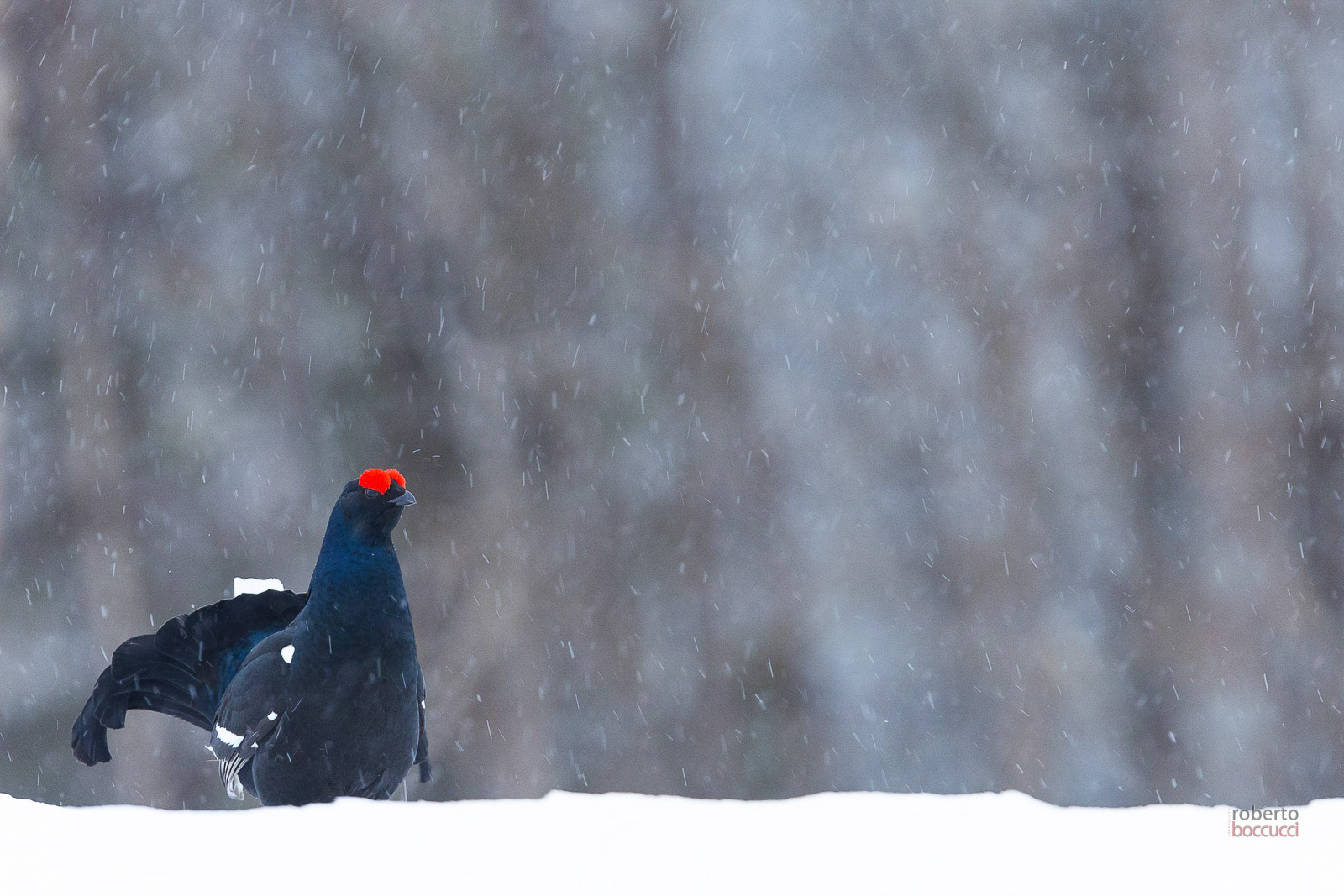
.It is dark by now, with the help of the frontal lamp I get into the silence of Swedish taiga. It is the middle of April and snow is starting to thaw freeing the heather bushes and the sponge carpets of moss from the oppression of its weight. Winter is over at last and spring paints the wood in all the hues of green. What is left of snow is made compact by the intense cold of boreal nights and makes it easier to walk. When I get to the chosen spot I set up the tent and get ready to spend a night in the forest. At 10 o’clock sharp capercaillies get to their perches as regular as clockwork. I cannot see them but I can hear wings flapping vigorously above my head. They always arrive at the same time and perch on the trees to wait for the next day. I wake up when it is still dark, pull the zipper of my tent a little bit down, as much as it is enough to see two males at full activity a few metres away. I am a privileged spectator of a ritual whose appeal has brought me here, to the North of Sweden, miles away from home. Every morning ,at dawn, a group of capercaillies spontaneously meet in the most retired spot of the wood. The place is always the same and the script has remained unchanged since last glaciation, it is a secret ritual which evokes and renews the myths and legends of the mountain. The males move swiftly in the silence and darkness of the forest, fighting to gain the right to continue to perpetuate their existence through their offspring, something which is becoming more and more difficult. The first light of dawn makes the scene more visible and I am able to see a male on parade reciting the same verse untiringly. This sound, which is similar to the one produced by uncorking a bottle of champagne, re-echoes in many parts of the lek.
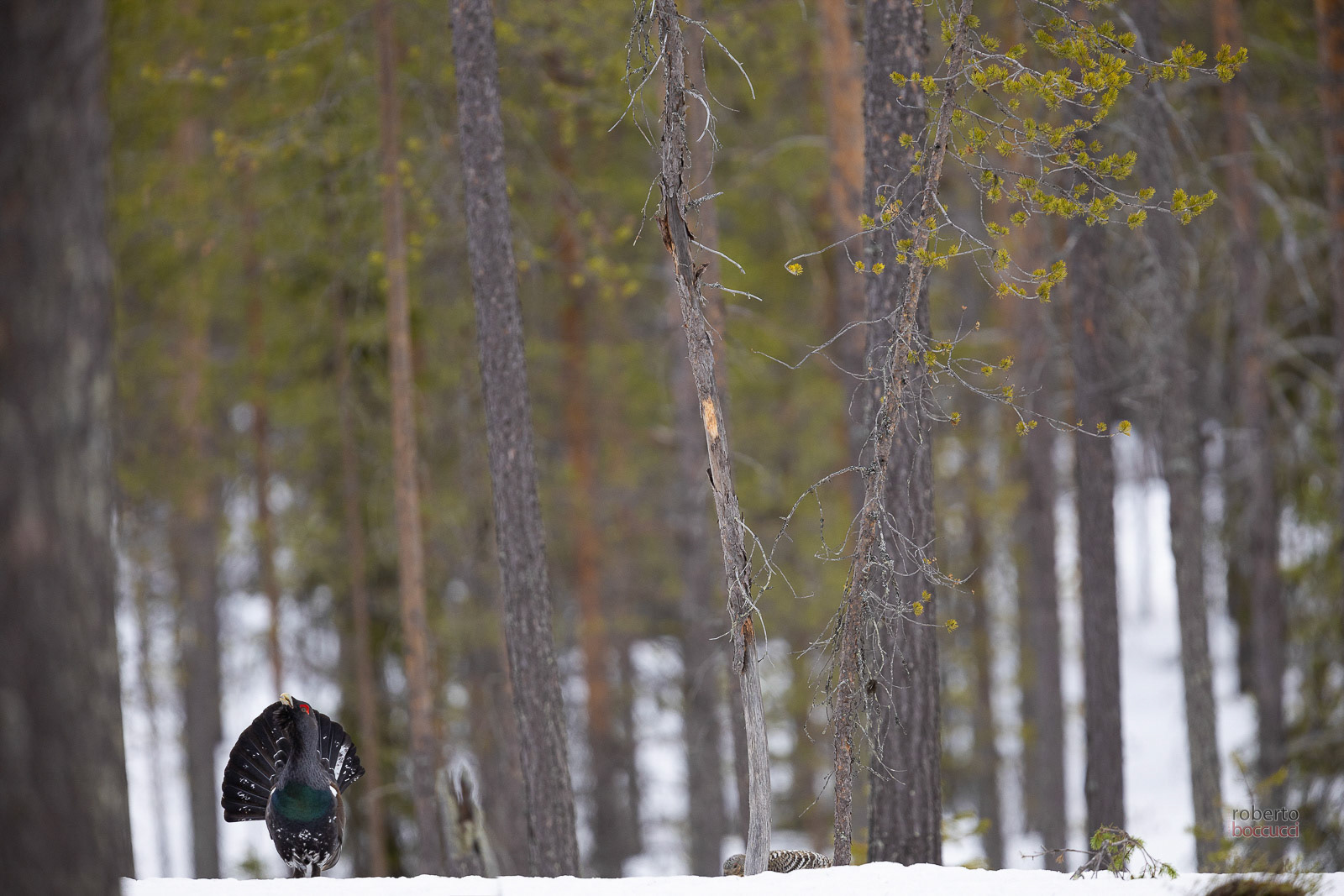
This morning there are three males competing to be at the center of the scene. Most of the parade takes place in a very faint light, therefore to carry out my job I can avail of the proper light for taking a photograph only for 45 minutes, as it is usually with photographers provided the scene takes place just in front of the place where they are positioned. To take a good photo a lot o good luck is necessary; most of the time there are favourable opportunities when the light is too faint, in a hidden place or when they are not too near. And, here I am..! Not far from me I hear an incredible noise, there are two capercaillies fighting , but unfortunately I cannot see anything as I am not in a good position and I don’t want to get out of my tent lest I might disturb them; then , suddenly, as by spell the wood turns silent again. I wait a few minutes, but my first impression is the right one : the fighters have flown away. Tomorrow they will certainly come back to their territory and the curtain will open on a new, unchangeable performance again.
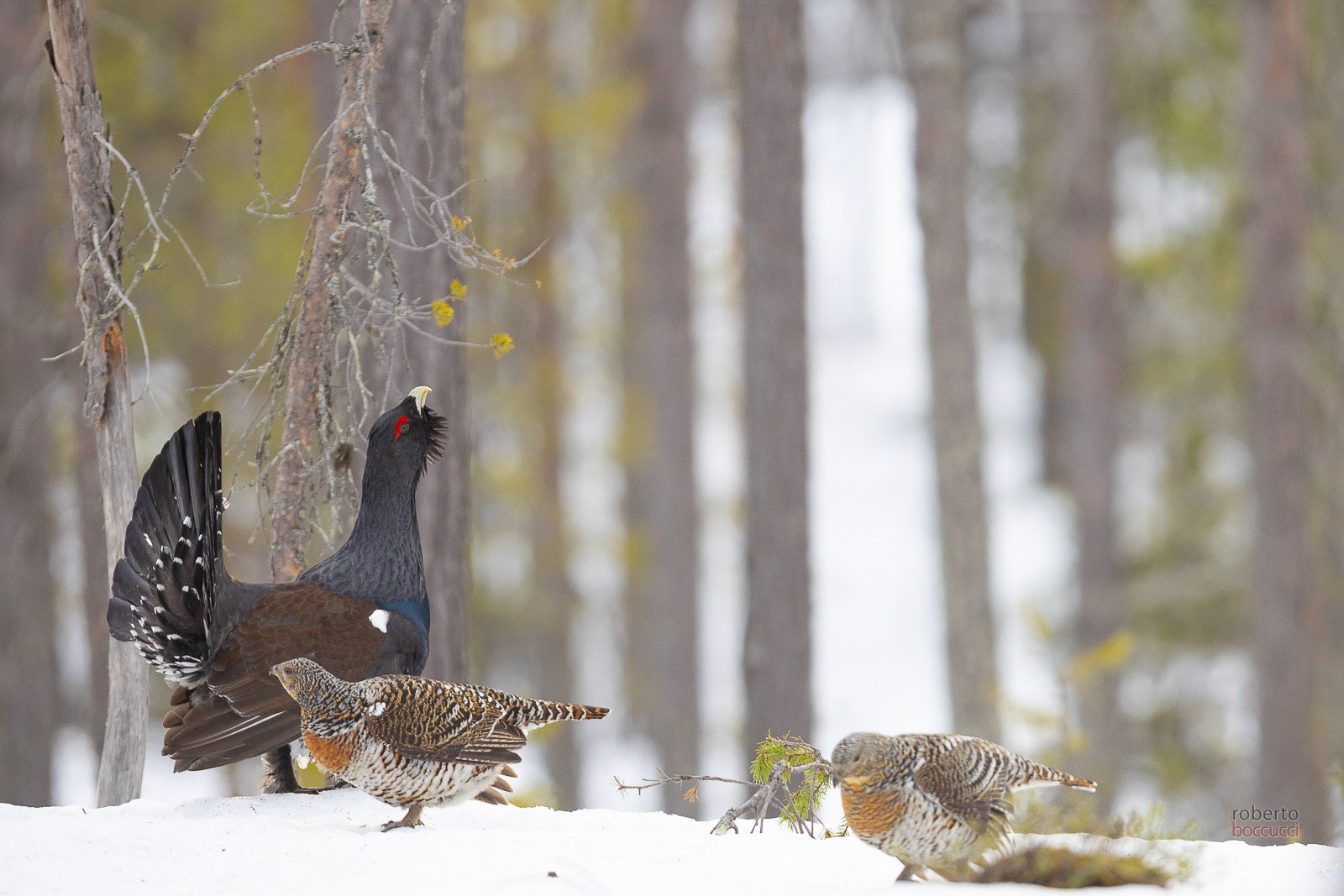
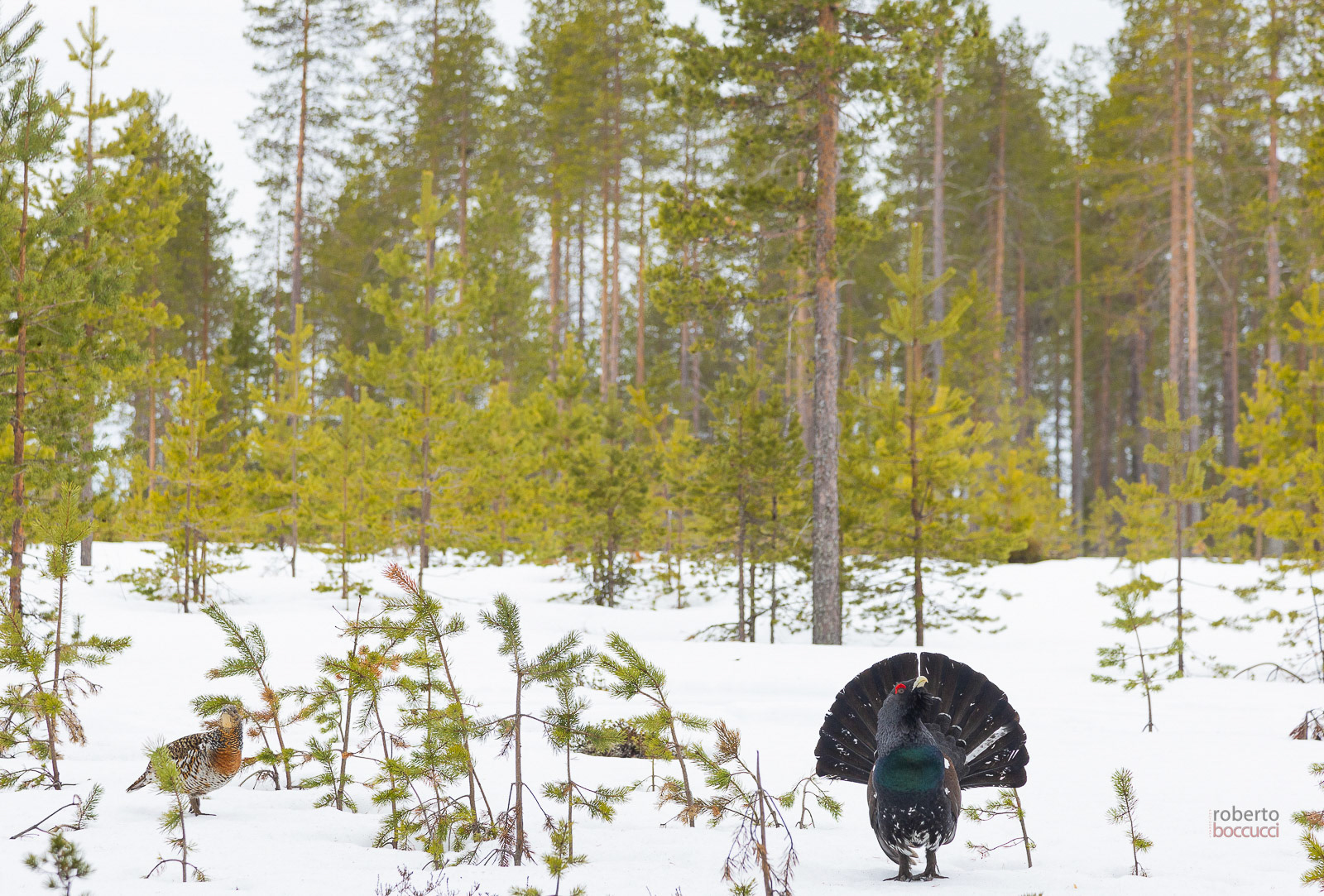
Capercaillies are unfortunately getting fewer in all their areas for climatic changes and for their scarce adaptability to the ever- increasing variations affecting their environment. This should have specific characteristics, first of all the average of its home range must be 550 ha (Storch 1995) ,then they need sites for courting, nidification ,breeding pasture and wintering where there are generally mixed natural woods with small hidden spots and a rich under-wood. Coniferae become fundamental in winter as fir and pine-needles are the only food in this season, while the presence of a thick under-wood of heath bushes is very important in summer as it can provide both an effective visual protection and varied and abundant food. I devoted four of the the six days I spent in Sweden to capercaillies and two to black grouse cocks . Their environments are completely different. The arenas of black grouse cocks tend to be completely open sites, sometimes even frozen lakes, because there is more light and the number of specimens in the arena is much higher, in fact, there were forty malesin the lek where I used to go. Even habits are different: black grouse cocks get to the lek in the afternoon when the grazing and still heavy light provides good photographic opportunities. At sunset the birds fly away to return at 1 or 2 o’clock at night . There is no risk to miss the spectacle, so deafening the call of forty males in love is! In the two days I was there the lek was visited by foxes, elks, cranes. Even if there was only very little time I had the opportunity to see how males defend their own, small part of territory .
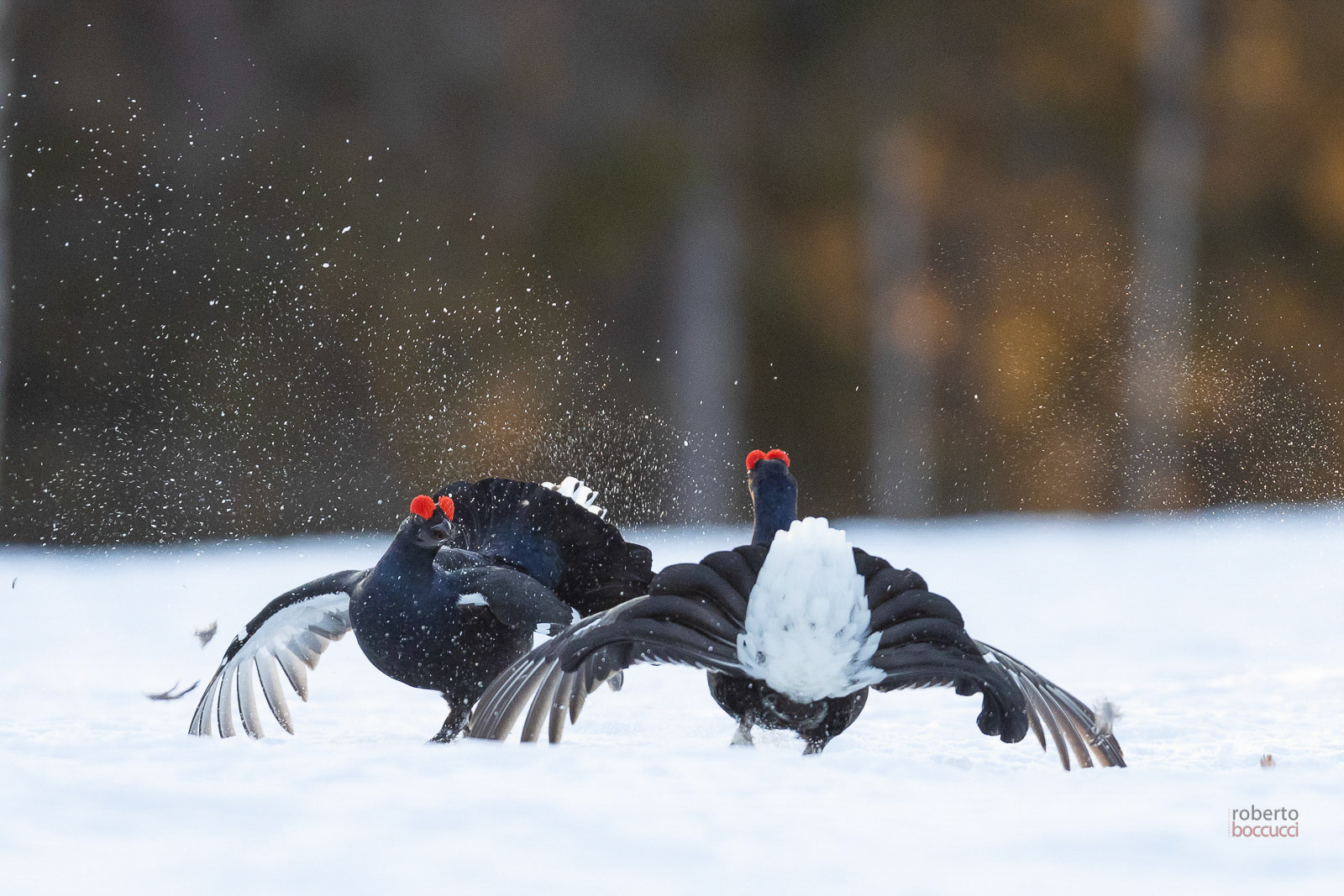
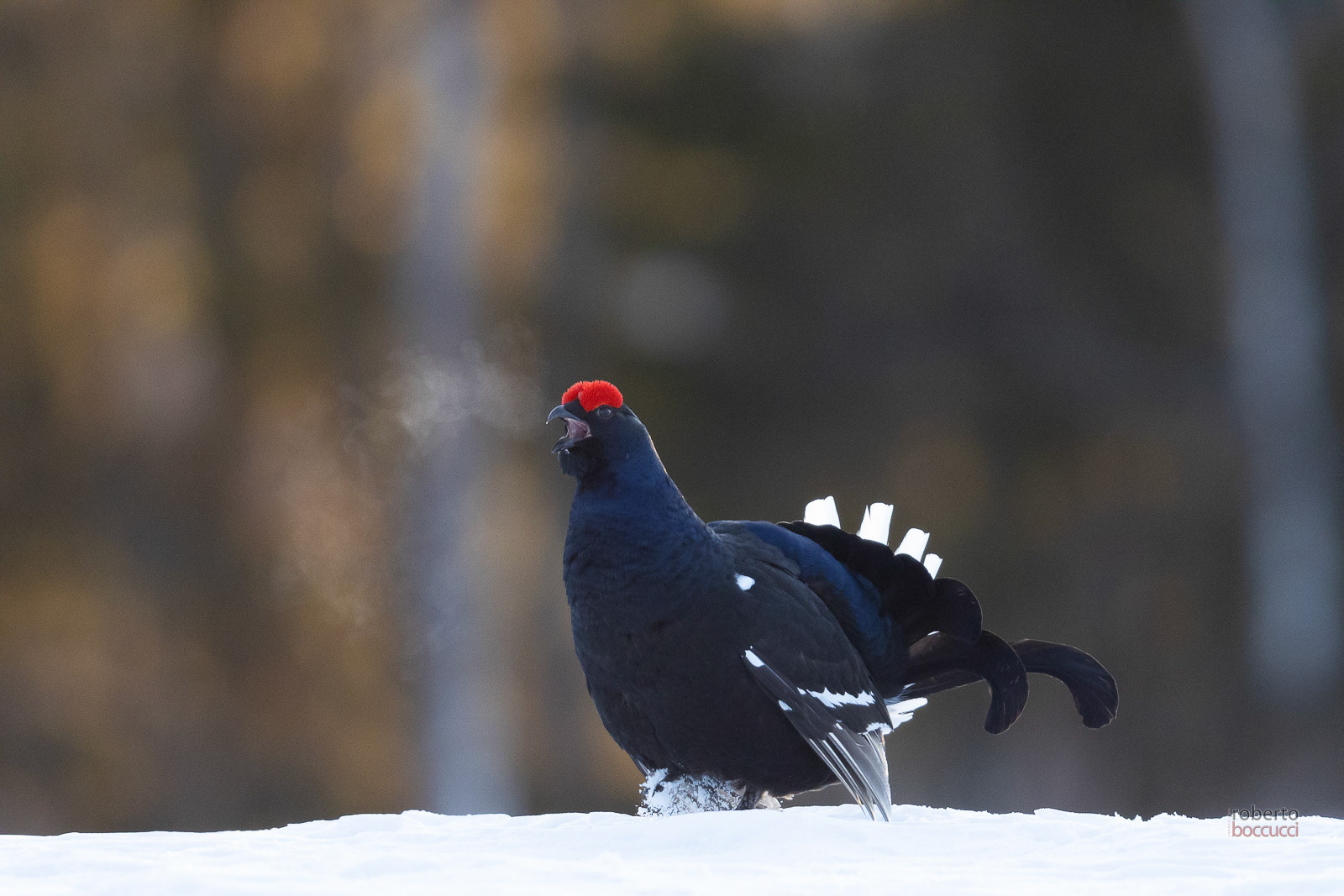
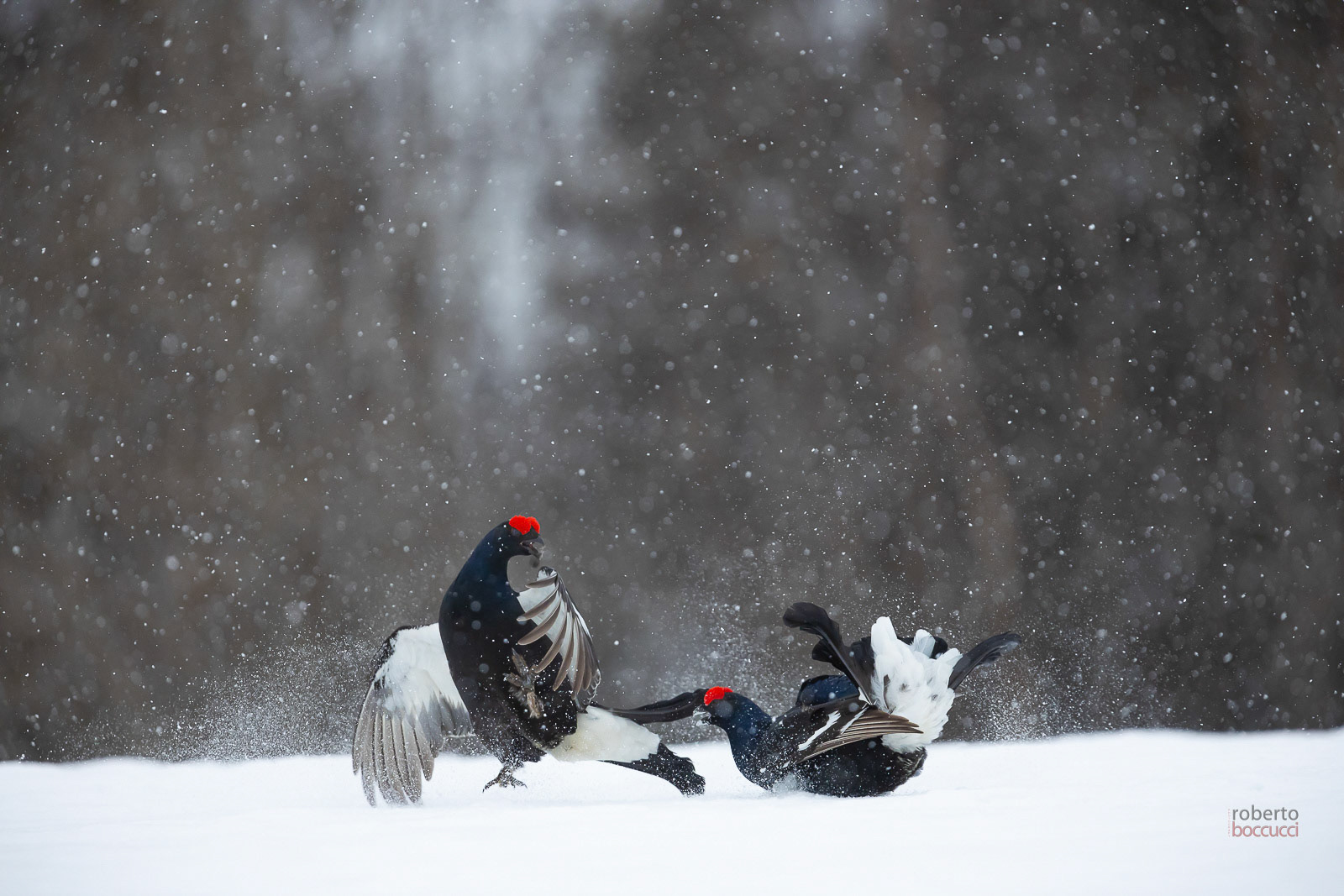
This morning there are three males competing to be at the center of the scene. Most of the parade takes place in a very faint light, therefore to carry out my job I can avail of the proper light for taking a photograph only for 45 minutes, as it is usually with photographers provided the scene takes place just in front of the place where they are positioned. To take a good photo a lot o good luck is necessary; most of the time there are favourable opportunities when the light is too faint, in a hidden place or when they are not too near. And, here I am..! Not far from me I hear an incredible noise, there are two capercaillies fighting , but unfortunately I cannot see anything as I am not in a good position and I don’t want to get out of my tent lest I might disturb them; then , suddenly, as by spell the wood turns silent again. I wait a few minutes, but my first impression is the right one : the fighters have flown away. Tomorrow they will certainly come back to their territory and the curtain will open on a new, unchangeable performance again. Capercaillies are unfortunately getting fewer in all their areas for climatic changes and for their scarce adaptability to the ever- increasing variations affecting their environment. This should have specific characteristics, first of all the average of its home range must be 550 ha (Storch 1995) ,then they need sites for courting, nidification ,breeding pasture and wintering where there are generally mixed natural woods with small hidden spots and a rich under-wood. Coniferae become fundamental in winter as fir and pine-needles are the only food in this season, while the presence of a thick under-wood of heath bushes is very important in summer as it can provide both an effective visual protection and varied and abundant food.

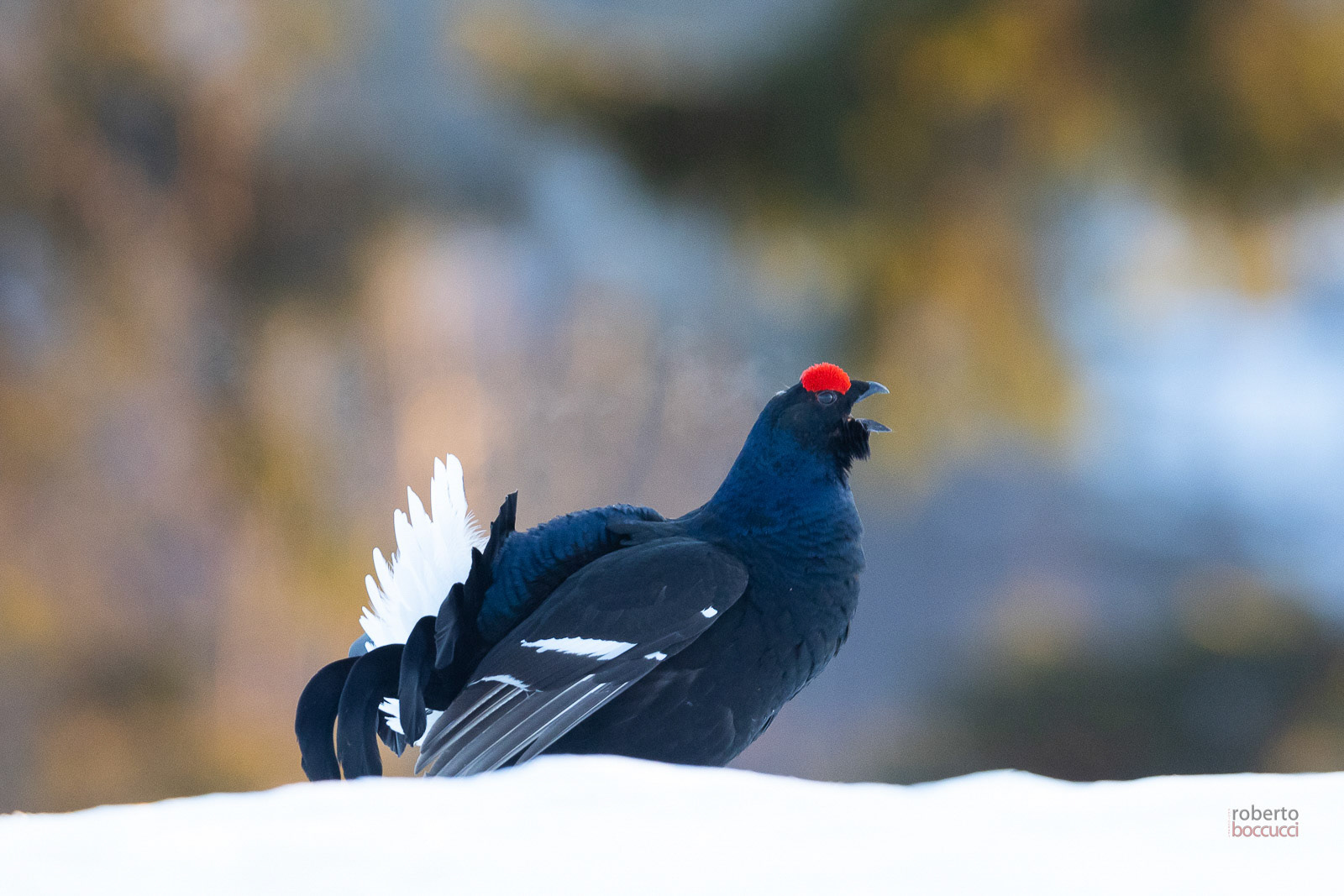
I devoted four of the the six days I spent in Sweden to capercaillies and two to black grouse cocks . Their environments are completely different. The arenas of black grouse cocks tend to be completely open sites, sometimes even frozen lakes, because there is more light and the number of specimens in the arena is much higher, in fact, there were forty malesin the lek where I used to go. Even habits are different: black grouse cocks get to the lek in the afternoon when the grazing and still heavy light provides good photographic opportunities. At sunset the birds fly away to return at 1 or 2 o’clock at night . There is no risk to miss the spectacle, so deafening the call of forty males in love is! In the two days I was there the lek was visited by foxes, elks, cranes. Even if there was only very little time I had the opportunity to see how males defend their own, small part of territory .